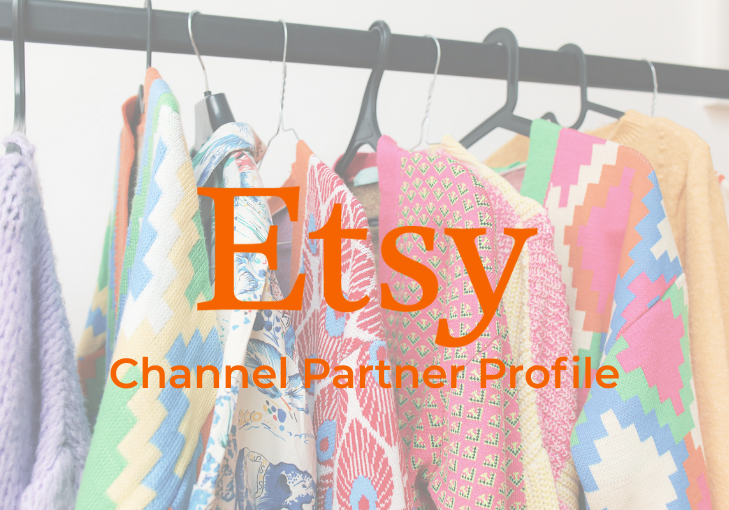
Here you will learn some interesting key facts about the company, and which kinds of e-commerce sellers can benefit most from selling on Etsy.
“Find things you’ll love. Support independent sellers. Only on Etsy.”
This is Etsy’s tag line, and it sums up their philosophy perfectly. Etsy shoppers aren’t looking for the plain, utilitarian items of daily life. They want something uniquely wonderful that they can love. Etsy sellers are all independently owned businesses, making and selling their wares from home workshops, barns and studios. And this unique marketplace is the one online platform where they all come together.
A brief history of Etsy
Etsy is a Brooklyn-based company that was founded in 2005 by artisan craftsmen looking for a larger marketplace to sell their wares. The company caught on and word spread fast, with thousands of sellers jumping on within the first few years. Then as cottage industries began to take off during the Great Recession, the company was able to buck the economic downturn and grew quickly by attracting many of those Makers to the platform.
Company management changed hands a few times during 2008 – 2015, when they went public. Those years saw major expansions and changes. While in the old days Etsy was more values-driven than profit-driven, the executive team is now focused on improved bottom lines for both the company and its sellers. It’s continuously upgrading the platform based on seller input, to make back end operations both simpler and faster for the e-commerce manager.
Selling on Etsy
Two kinds of accounts
There are two types of accounts you can have on Etsy: Standard and Plus. Standard is a free service, and recommended if you’re just getting started and don’t have a ton of products to list. Once they get used to selling on Etsy, though, most vendors switch to a Plus account.
Plus accounts offer an expanded set of tools and customizable options. Everything described below applies to Plus users.
Your store’s enhanced home on the web
If you’re planning to sell only on Etsy, the site gives you tools to build everything you need–including your own website. They’ve added new banner templates and featured listing options that put your products in the spotlight. They also offer a 50% discount if you want a custom “.com” address, and free access for a year to a “.store” address with your store’s name.
Mobile flexibility
There’s now an Etsy App to manage orders, edit listings, and respond to buyers instantly from a tablet or phone.
Lowering your postage costs
With free shipping more and more in demand from consumers, many merchants now opt to price their wares so that shipping costs can be at least partly absorbed. (And Etsy has adjusted its search algorithm to prefer results from stores that ship for free.) To ease the pain further, Etsy lets you buy and print discounted postage from your Etsy account.
Social Tools
Etsy’s Social tools include suggestions and templates for posting on Facebook, Pinterest, Twitter, or Instagram, so you don’t have to be a social marketing genius yourself to succeed.
Advertising Tools
There are two basic types of ads offered: Etsy Ads and Offsite Ads. With Etsy Ads, your listings get boosted in Etsy search. With Offsite Ads, Etsy will pay to advertise your listings on sites like Google, Facebook, Instagram, Pinterest, and Bing. You pay an advertising fee on any resulting sale. You’ll also get bonus credits: 15 listing credits and $5 in Etsy ad credits each month you’re a Plus seller.
More info for sellers can be found here.
It takes a certain amount of skill to get your listings to float towards the top of search results on Etsy, and there is a short learning curve to get familiar with how to operate your Etsy store. But to put things in perspective, it takes a lot longer to get a new website to appear in the top results of Google. Especially if your products are unique and lovable, Etsy is the place to sell.
See more in our Channel Partner profile series here:
Channel Partner Profile: How to Sell on eBay
Channel Partner Profile: How to Sell on Walmart.com
Channel Partner Profile: How to Sell on Rakuten




